Turbo deflector for ventilation: principle of operation and comparison of types of rotational deflectors
Excessive humidity and odors create an unhealthy atmosphere and even become a cause of disease. The quality of ventilation in the home, office or at the factory directly affects the level of comfort, do you agree with this?
That is why well-arranged ventilation is the most important condition when commissioning construction projects. Establish high-quality air exchange helps the turbo deflector for ventilation. But which one to choose and install correctly so as not to call specialists?
We will try to answer all the questions in detail - this material discusses the principle of operation, existing types of turbo-deflectors, and installation features. And also paid attention to maintenance and repair.
For a better understanding of the information presented, visual photos and schemes of the device of rotational deflectors are selected, video recommendations for eliminating breakdowns are given. The information is structured and even an inexperienced home craftsman will have no difficulty understanding the intricacies of choosing, installing and repairing a rotary deflector.
The content of the article:
Principle of Operation and Design
The operation of the turbo deflector is based on the following principles: using wind energy, the device creates a vacuum in the ventilation shaft, increases traction and draws polluted air from the room, ventilation duct, and under-roof space.
No matter how the direction and strength of the wind changes, the rotating head (impeller) always rotates in one direction and creates a partial vacuum in the ventilation shaft.
Which increases the intensity air movement in the pipeexcludes the appearance reverse thrust and improves overall air exchange.
In addition, the device prevents precipitation from entering the ventilation duct.
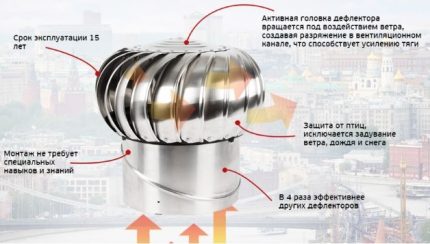
The upper part, the turbine head, rotates due to the force of the wind, creating a vacuum inside the ventilation shaft.
The lower part is attached to the channel itself. For this, holes for self-tapping screws are provided in its base.
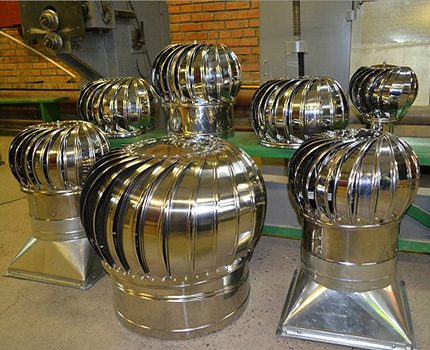
The rotary deflector may have bases of round, square or flat square shape.
At the buyer's request, it is equipped with roof passages designed for a slope angle of 15 to 35 °.
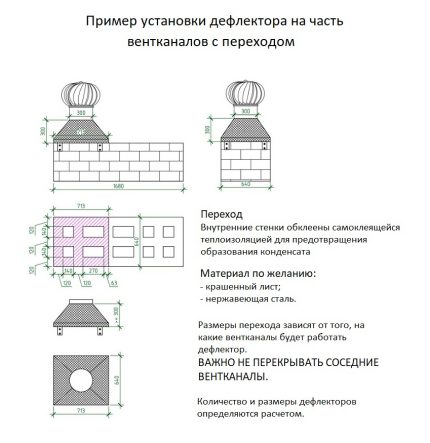
Advantages and disadvantages of a turbo deflector
The following arguments can be made in favor of using a turbine:
- Quick air exchange. The rotating head of the turbine promotes rapid air exchange in the ventilation shaft, prevents the formation of reverse traction, protects the roof space from the accumulation of condensate. The efficiency of a rotary device is much higher than a conventional deflector.
- Does not consume electrical energy, unlike electric fans, and works thanks to the force of the wind. This puts the turbo deflector in a number of cost-effective devices.
- Average life with regular maintenance and proper installation - about 100 thousand hours or 10 years, stainless steel models can last up to 15 years. This is three times longer than the fans.
- Rain protection. Prevents snow, hail, rain from entering the ventilation ducts. It can be used in regions with strong and frequent winds.
- Compact and lightweight design. Devices with a base diameter greater than 200 mm weigh significantly less than the TsAGI deflector. The largest model (680 mm) weighs only about 9 kg; in contrast, a TsAGI deflector with the same base diameter can weigh about 50 kg.
- Easy installation does not require special knowledge and skills.
The advantages of a turbo deflector for ventilation are undoubtedly many, but there are also disadvantages.
Against its use, the following facts speak:
- The device is quite expensive compared to conventional deflectors.
- Unfavorable atmospheric conditions such as lack of wind, high humidity and freezing temperatures can lead to a complete stop. It should be noted that mobile turbines are still subject to icing to a much lesser extent.
- The deflector cannot be used as the main tool for removing contaminated air in rooms with high ventilation requirements: in medical laboratories and in industries whose work is associated with chemical and explosive substances.
The price of a rotary deflector is quite high compared to static devices, depending on the material used for manufacturing - stainless steel, polymer-coated steel, galvanized steel.
But work efficiency pays for all costs.
Types of Rotary Deflectors
To improve action ventilation system of the apartment or private home Many modifications of deflectors have been developed. Some of them are static, others are rotational.
The latter include turbines with a rotating impeller head, which operates due to the force of the wind.
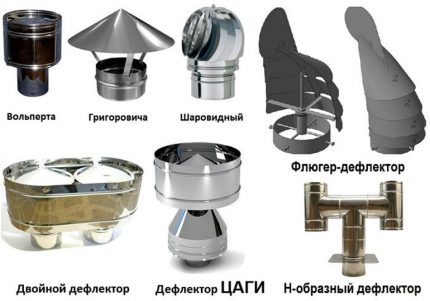
The classification of rotary turbines can be carried out according to the following characteristics:
- material of manufacture - produce products from stainless steel, galvanized or painted metal;
- diameter of a connecting ring (nozzles) - it can be from 110 to 680 mm, the dimensions correspond to the typical dimensions of sewer pipes.
Manufacturers produce models of turbo-deflectors, which are very similar in appearance to each other. But their characteristics may vary slightly.
Here is a summary of some of them:
- Turbovent. The company of the same name produces rotational ventilation turbines from aluminum, the thickness of which is 0.5-1.0 mm. The base is made of galvanized steel 0.7-0.9 mm. The product is painted in any color according to the generally accepted color standard - RAL.
- Turbomax. The manufacturer sells his product, calling it a natural traction supercharger. AISI 321 steel with a thickness of 0.5 mm is used for manufacturing. The product can be used for both ventilation and smoke channels, it can withstand temperatures up to +250 ° C.
These are high quality stainless steel products. Suitable for improving draft in ventilation systems and chimneys. Apply under conditions of temperature increase up to 500 ° C.
There are also products of lesser-known brands and manufacturers on the market. By buying such products should be treated with caution, requesting a quality certificate.
Scope of the device
The rotational turbine has worked well in rooms and facilities where increased air exchange is required.
It is used:
- In residential private and multi-apartment buildings. It must be remembered that special requirements are imposed on the operation of ventilation shafts of multi-storey residential buildings. The device helps to cope with the problem of insufficient ventilation of the premises, attic space, completely eliminates the phenomenon of backdraft.
- On livestock farms and agricultural buildings - in stables, poultry houses, granaries, hay bales, etc. Helps to remove gases and fumes that are formed during the keeping of animals, maintains optimal humidity.
- In processing plants. Non-volatile ventilation system saves money on energy. An exception is objects whose activities are associated with substances hazardous to human health.
- In public places - sports complexes, pools, shopping centers and cinemas.
In addition to the premises, the turbine is used for ventilation of the under-roof space.
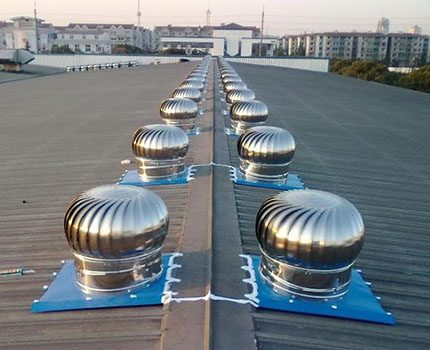
How to calculate the need for devices?
For ventilation of small rooms (rooms, garages, basements) a turbine with a base diameter of 110-160 mm is used. Devices with sizes from 200 to 600 mm are suitable for rooms up to 40 m2 with a permanent stay in them up to four people.
Large diameters, 400 to 680 mm, are used for providing air exchange in rooms with a large area, apartment buildings, warehouses, livestock farms.
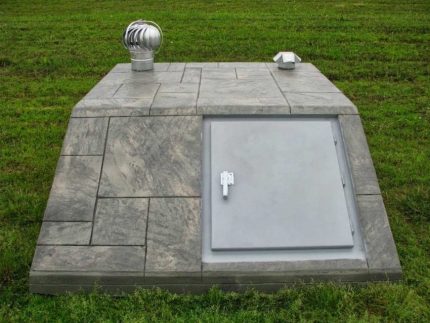
You can accurately calculate the number of baffles required for installation using the formula:
Ventilated volume = air exchange rate per hour X room volume.
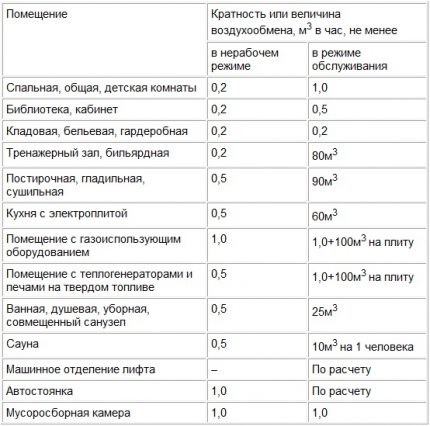
Number of ventilation baffles = ventilated volume / baffle capacity.
For example: The room is 12 m wide, 20 m long and 3.5 m high. The wind strength is on average 3.5 m / s. The air exchange in the room should go through 3 cycles per hour. The calculations are carried out as follows:
- Ventilated volume = (20x15x3.5) x 3 (number of air exchange cycles) = 3150 m3/ hour $
- 3168/800 (deflector performance) = 3.94, i.e. 4 pcs.
Based on the calculations, for ventilation, it is necessary to install 4 deflectors of the corresponding model.
Installation chimney turbo deflectorworking on gas or liquid fuel is possible, provided that the outlet temperature does not exceed the maximum temperature declared by the manufacturer.
It can be from 100 to 500 ° C. At higher temperatures than allowed, special high-temperature nozzles must be used.
You may also be interested in information about self-installing a deflector in a chimney, reviewed here.
Turbine Installation Rules
Ventilation turbines can be installed directly on a pitched or direct roof, on the departure of a chimney or ventilation shaft. The location depends on the application of the turbine.
For ventilation of the subroof space use a turbine with a base diameter of 315 mm. She can serve 50-80 m2 roofing - the exact area depends on the slope of the roofing - the smaller the angle, the greater the number of turbo deflectors you need to mount.
For installation on a pitched structure, select the highest point on the ramp. With improvement ventilation systems residential premises installation is carried out for the departure of the ventilation shaft.
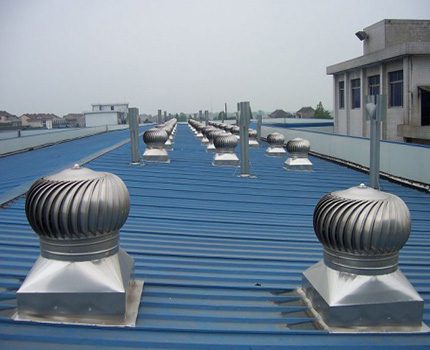
When mounting a rotary turbine on a chimney pipe, its height is calculated together with the device. That is, a turbo deflector, as part of a chimney, increases its length.
The rules for placing the chimney relative to the ridge remain the same as when installing the pipe without any nozzles:
- If the distance from the ridge to the pipe is less than or equal to 1.5 m, then the pipe is raised 0.5 m above the ridge.
- The height of the pipe, placed at a distance of 1.5 to 3 m, may be equal to the height of the ridge.
- At a distance of more than 3 m from the ridge, the top of the pipe should be no lower than the level of the conditional line drawn down 10 ° from the level of the ridge height.
To reduce heat loss in the winter through the ventilation system, the manufacturer allows the use of gate valves (for residential premises) or adjustable air intake devices (for storage and production facilities).
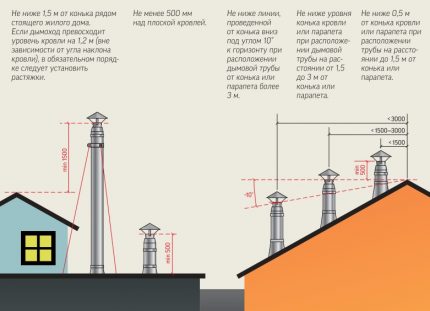
Service and troubleshooting
Almost the only malfunction of the device is the lack of rotation of the impeller.
There may be several reasons for this:
- Insufficient or absent wind force. Make sure that the wind is sufficient for the device to work properly.
- The bearings are jammed. In this case, it is checked whether there are any mechanical obstacles to their rotation. If necessary, lubricate or replace the bearing.
- Deflector freezing occurred. You need to check the device or wait for the temperature to rise.
- Mechanical damage. You need to see if a foreign object has got into the device.
The turbo deflector used for ventilation is a fairly simple device, it does not require frequent maintenance.
To extend service time vent deflector Once a year (after winter), it is sufficient to lubricate the bearings. For processing, lithol is used - a waterproof lubricant based on refined petroleum products.
To lubricate or replace a failed bearing, disconnect the cap, open the circlip with a special tool - a puller - and lubricate or replace the bearing.
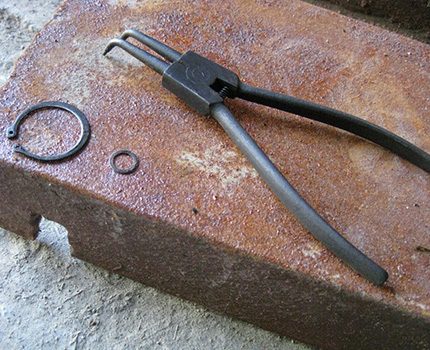
You may also need information on how to properly clean the ventilation shaftconsidered in our other article.
Conclusions and useful video on the topic
What is a rotational deflector for ventilation:
What to choose for ventilation - turbo deflector or TsAGI deflector:
How to repair a turbo deflector yourself:
The most optimal solution to the problem is always simple. There is no longer any need to install electric fans to improve traction in the ventilation ducts. The appearance of turbo-deflectors on the market has deprived consumers of many problems.
Have you equipped your home ventilation ducts with turbo deflectors? Or maybe you yourself assembled a rotary deflector and fixed it yourself? Tell us how complicated the manufacturing process was and how the device proved to be in action.
Or have you noticed inaccuracies in the above material? Please write to us about this in the comments under the article.

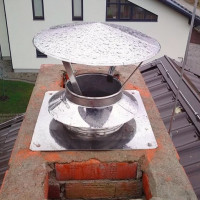 Installing a ventilation fungus on the roof: types and methods of installing a deflector on an exhaust pipe
Installing a ventilation fungus on the roof: types and methods of installing a deflector on an exhaust pipe 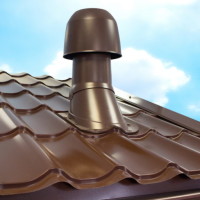 How to increase traction in ventilation: an overview of methods and devices for enhancing traction
How to increase traction in ventilation: an overview of methods and devices for enhancing traction  Supply and exhaust ventilation: principle of operation and features of the arrangement
Supply and exhaust ventilation: principle of operation and features of the arrangement 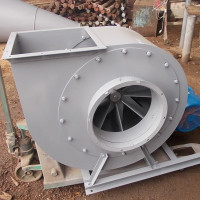 Centrifugal fan: device specifics and device operating principle
Centrifugal fan: device specifics and device operating principle 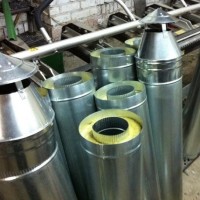 Sandwich pipe for ventilation: installation instructions and the nuances of assembling ventilation from a sandwich pipe
Sandwich pipe for ventilation: installation instructions and the nuances of assembling ventilation from a sandwich pipe 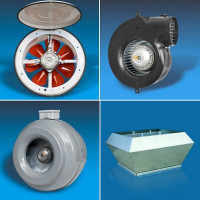 Types of fans: classification, purpose and principle of their operation
Types of fans: classification, purpose and principle of their operation  How much does it cost to connect gas to a private house: the price of organizing gas supply
How much does it cost to connect gas to a private house: the price of organizing gas supply  The best washing machines with dryer: model rating and customer tips
The best washing machines with dryer: model rating and customer tips  What is the color temperature of light and the nuances of choosing the temperature of the lamps to suit your needs
What is the color temperature of light and the nuances of choosing the temperature of the lamps to suit your needs  Replacement of a geyser in an apartment: replacement paperwork + basic norms and requirements
Replacement of a geyser in an apartment: replacement paperwork + basic norms and requirements
I live in a private house Krasnogorsk. Faced with the fact that the hood in the kitchen does not work at all, although ventilation was originally laid during the construction of the house. Because of this, it was always humid and stuffy in the kitchen when cooking, there was a smell of cooked food, which dispersed throughout the house. At first I thought that the builders clogged the ventilation duct, tried to clean it - it turned out pointless, it was not clogged, the problem was precisely in the absence of traction, the reasons were not clear ... I decided to install a turbine deflector on the roof. Mounted by myself. A turbine is mounted directly to the ventilation pipe using conventional self-tapping screws. The deflector almost always spins, even in light winds and draws air from the kitchen. I tried to bring a match to the ventilation and a piece of paper: the difference “before” and “after” is very noticeable. Turbo deflector definitely works!
Recently, our company installed these expensive devices. Prior to this, especially in the summer period, there was a malfunction in the operation of our ventilation, since the exhaust air stagnated in the room, it was completely unbearable to work. After their installation, I was surprised that it became really noticeable more fresh air. At the same time, they are still profitable, since electricity is not required for operation.